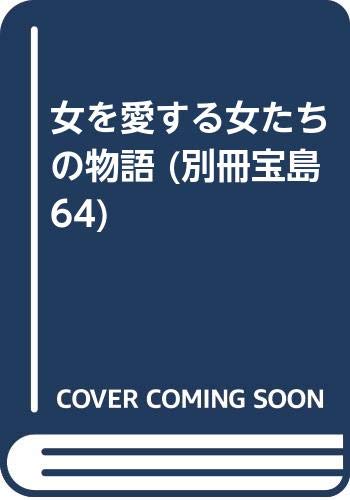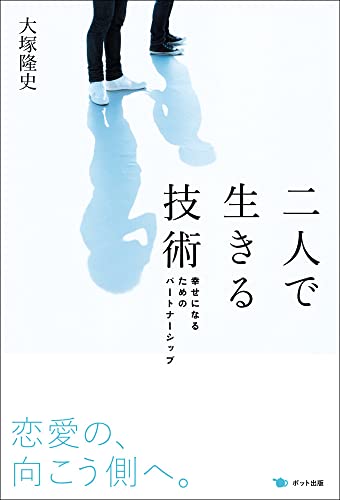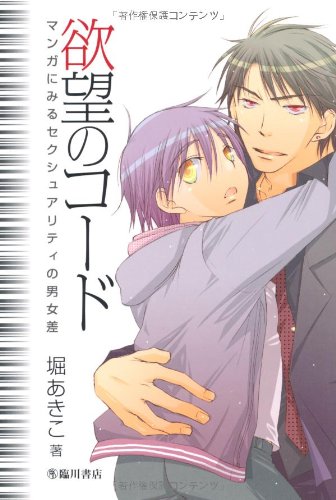12 0 0 0 OA A Microfluidic Platform Based on Robust Gas and Liquid Exchange for Long-term Culturing of Explanted Tissues
- 著者
- Nobutoshi OTA Genki N. KANDA Hiroyuki MORIGUCHI Yusufu AISHAN Yigang SHEN Rikuhiro G. YAMADA Hiroki R. UEDA Yo TANAKA
- 出版者
- The Japan Society for Analytical Chemistry
- 雑誌
- Analytical Sciences (ISSN:09106340)
- 巻号頁・発行日
- vol.35, no.10, pp.1141-1147, 2019-10-10 (Released:2019-10-10)
- 参考文献数
- 24
- 被引用文献数
- 5
Microfluidic devices are important platforms to culture and observe biological tissues. Compared with conventional setups, microfluidic devices have advantages in perfusion, including an enhanced delivery of nutrients and gases to tissues. However, explanted tissues can maintain their functions for only hours to days in microfluidic devices, although their observations are desired for weeks. The suprachiasmatic nucleus (SCN) is a brain region composed of heterogeneous cells to control the biological clock system through synchronizing individual cells in this region. The synchronized and complicated cell–cell interactions of SCN cells are difficult to reproduce from seeded cells. Thus, the viability of explanted SCN contributes to the study of SCN functions. In this paper, we propose a new perfusion platform combining a PDMS microfluidic device with a porous membrane to culture an explanted SCN for 25 days. We expect that this platform will provide a universal interface for microfluidic manipulation of tissue explants.
12 0 0 0 OA 朝鮮人名辞書
- 著者
- 朝鮮総督府中枢院 編
- 出版者
- 朝鮮総督府中枢院
- 巻号頁・発行日
- vol.[本編], 1939
- 著者
- 田村 和之
- 出版者
- 賃社編集室 ; 1972-
- 雑誌
- 賃金と社会保障 = Wage & social security (ISSN:09114718)
- 巻号頁・発行日
- no.1730, pp.51-66, 2019-05
12 0 0 0 OA 政府間税源配分と付加価値税
- 著者
- 片山信子
- 出版者
- 国立国会図書館
- 雑誌
- 調査と情報 (ISSN:13492098)
- 巻号頁・発行日
- no.857, 2015-03-24
12 0 0 0 教職員のためのセクシャル・マイノリティ サポートブック
- 出版者
- [教職員のためのセクシュアル・マイノリティサポートブック制作実行委員会]
- 巻号頁・発行日
- 2010
12 0 0 0 IR イヴァン雷帝とクールプスキー公の往復書簡試訳(I)(創立75周年記念号)
- 著者
- 栗生沢 猛夫
- 出版者
- 小樽商科大学
- 雑誌
- 小樽商科大学人文研究 (ISSN:0482458X)
- 巻号頁・発行日
- vol.72, pp.109-156, 1986-09
12 0 0 0 OA 宇宙の統一 : 神示小説
12 0 0 0 OA リチャード・ダブル、あるいは自由意志の概念工学のしかるべき限界について
- 著者
- 山口 尚 YAMAGUCHI Sho
- 出版者
- 名古屋大学情報科学研究科情報創造論講座
- 雑誌
- Nagoya journal of philosophy (ISSN:18821634)
- 巻号頁・発行日
- vol.14, pp.19-30, 2019-09-16
本稿は〈リチャード・ダブル論〉と〈自由意志の概念工学への批判〉の二側面をもつ。すなわち本稿は、一方で、自由意志と道徳的責任の哲学における極端な相対主義者リチャード・ダブルの思想的発展を(1)非実在論の主張(2)メタ哲学的相対主義の提示(3)自由意志論の心理学化の提唱という三段階に分け、彼の全体的思想をアウトラインする。他方で、ダブルの立場の考察から《自由意志や道徳的責任に関する私たちの概念枠組みは簡単に改訂されうるものではない》という洞察が得られるのだが、かかる洞見はいわゆる「自由意志の概念工学」の理解を批判的に深めることに繋がる。本稿の終盤では、私たち自由意志の概念工学者が、或る意味で「十中八九、敗れ去る」ことが指摘される。そして、こうした限界を見据えることによって却って自由意志の概念工学の使命が明らかになる、と言いたい。
12 0 0 0 思春期サバイバル : 10代の時って考えることが多くなる気がするわけ。
- 著者
- 今野 元
- 出版者
- 愛知県立大学多文化共生研究所
- 雑誌
- 共生の文化研究 = Journal of cultural symbiosis research (ISSN:2188000X)
- 巻号頁・発行日
- no.13, pp.110-120, 2019-03-31
- 出版者
- JICC出版局
- 巻号頁・発行日
- 1987
12 0 0 0 IR 別形態の院宣・綸旨--「御奉行所候也」という文書について
- 著者
- 橋本 初子
- 出版者
- 史学研究会 (京都大学文学部内)
- 雑誌
- 史林 (ISSN:03869369)
- 巻号頁・発行日
- vol.62, no.5, pp.p671-696, 1979-09
個人情報保護のため削除部分あり今日、神社に伝来している古文書のなかに、「御奉行所候也」という書止め文言の文書がある。この文書は、様式的には御教書であり、公刊の史料集では、すでに御教書として扱われてきている。しかし、これらの文書はたんなる御教書ではなく、実際には院宣・綸旨として機能していた。本来、院宣は院司奉書、綸旨は蔵人奉書という形式が、いずれも原則であるが、本稿に紹介する「御奉行所候也」の院宣・綸旨は、かかる普通の院宣・綸旨をさらに下位の庁務主典代や蔵人所出納がもう一度奉じて、宛所に伝達するという二段構えの奉書形式である。本来の院宣・綸旨は、官職を帯し、政治機構内に位置しなければもらえなかった。そして官職についていないが、上皇 (天皇) の命令が伝達されねばならない時、本来の院宣・綸旨とは別形態の「御奉行所候也」の形式によって、院宣・綸旨が伝達された。本稿では、従来の古文書学では扱われなかった、この別形態の院宣・綸旨の実態について考察するものである。
12 0 0 0 二人で生きる技術 : 幸せになるためのパートナーシップ
12 0 0 0 IR 18世紀初頭の朝鮮通信使と日本の知識人
- 著者
- 鄭 英實
- 出版者
- Institute for Cultural Interaction Studies, Kansai University
- 雑誌
- 文化交渉における画期と創造-歴史世界と現代を通じて考える-
- 巻号頁・発行日
- pp.65-91, 2011-03-31
Diplomatic relations between Korea and Japan, which weresuspended during the Japanese invasions of Korea between 1592and 1598, were normalized when the Korean side asked forprisoner repatriation after the wars were over. Tokugawa Ieyasu'sdefeat of Toyotomi Hideyoshi's government and the beginning of theEdo bakufu, with a concomitant unifi cation of political interests,contributed to restored relations. As a result, Korean delegationswere dispatched to Japan between 1607 and 1811 for a total oftwelve times.The account of their experiences in an unusual foreign countryduring an age of seclusion, "Records of Missions to Japan," werewritten by the Korean envoys dispatched to Japan. Not only aremany aspects of Edo Japan portrayed in these records, but theconcrete examples depicted in them reveal how Koreans viewedJapan at the time. In particular, after the political situation in bothcountries stabilized, the main objective of the Korean missionsbecame cultural exchanges, which receive the most focus in therecords. A large number of Korean envoys recorded accounts oftheir interactions with Japanese men of letters, including theirevaluations of the Japanese they met, their feelings toward them,etc. There are diff erences in perceptions of the Korean envoystoward the same Japanese individuals depending on the respectiveranks of the Koreans and the relationships between the envoys andthe Japanese with whom they interacted. The varying shades ofamicability are palpable in the records.The records show that the fi ercest debate occurred on the Koreanside when envoys were sent in to Japan in 1711, and Arai Hakuseki(1657-1725), a Japanese statesman, requested a change in the rules for dispatching Korean missions to Japan. The chief envoy, JoTae-eok ( 1675-1728), and his deputy envoy, Yim Su-kang ( 1665-1721), immediately directed their harshest criticism at the Tsushimagovernment offi cials who served as intermediaries, as well as atArai Hakuseki. In spite of the potential for this incident to growinto a dangerous diplomatic row for both countries, interpreter KimHyeon-mun recorded very little about this or other sensitivediplomatic negotiations.When a confl ict concerning a banquet to be held at Hōkōji, thesite of Toyotomi Hideyoshi's Great Buddha, occurred in 1719, chiefenvoy Hong Chi-jung (1667-1732) sought peaceful reconciliation, butat the same time was distressed by the issue of the Seishindo.Meanwhile, even as the envoy offi cial Sin Yu-han quarreled directlywith Amenomori Hoshū (1668-1755), a Japanese interpreter andConfucian scholar, a Korean military offi cer, Jeong Hu-gyo, wrote abrief explanation concerning the Hōkōji, after which positivecritiques were made of Amenomori Hoshū and the classics.Thus, in spite of the seeming uniformity in the depictions ofenvoys' experiences in "Records of Missions to Japan," it is possibleto discern clear diff erences in the descriptions contained therein.This paper focuses on the nature of the interaction between theKorean envoys and Japanese intellectuals at the end of the Edoperiod by examining the diff erences generated by the ranks of eachenvoy and the form of interaction between the envoys and theJapanese.
12 0 0 0 OA 無条約時代と我海軍
- 著者
- 海軍省海軍軍事普及部 編
- 出版者
- 海軍省海軍軍事普及部
- 巻号頁・発行日
- 1937
12 0 0 0 OA 欧米大停電から何を学ぶか
- 出版者
- 一般社団法人 電気学会
- 雑誌
- 電気学会誌 (ISSN:13405551)
- 巻号頁・発行日
- vol.125, no.1, pp.29-33, 2005 (Released:2007-02-02)
本記事に「抄録」はありません。




